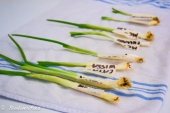




 2
2




 1
1





 1
1




"Study books and observe nature; if they do not agree, throw away the books." ~ William A. Albrecht
 1
1








 3
3




Let Nature work for you.









 2
2




List of Bryant RedHawk's Epic Soil Series Threads We love visitors, that's why we live in a secluded cabin deep in the woods. "Buzzard's Roost (Asnikiye Heca) Farm." Promoting permaculture to save our planet.




Whatever it takes to dodge a time clock.








dirk maes wrote:If you are lucky this could/should be perennial leek. Grows in clusters of 5 to 15 shoots in late august. Best propagated generative witch means cut flower heads.Its a winter hardy leek witch gives you middle finger tick leeks early April or March depending on the climate.




 2
2




Let Nature work for you.
 2
2




Let Nature work for you.




 3
3




 3
3




Although it produces an inflorescence, it has not been recorded as producing seed.
Instead, it reproduces clonally (Treu 1999) by the production of bulblets on rhizomes
from the parent bulb, by division o f the parent bulb into two daughter bulbs
following flowering, and by the production o f bulbils in the inflorescence (Figure 1)
 1
1




This is all just my opinion based on a flawed memory

 1
1




Nicole Alderman wrote:Ah! Here it is! http://orca.cf.ac.uk/56030/1/U584777.pdf





|
I've been selected to go to the moon! All thanks to this tiny ad:
heat your home with yard waste and cardboard
https://freeheat.info
|






